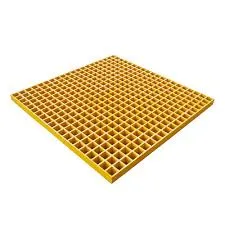
-
 Afrikaans
Afrikaans -
 Albanian
Albanian -
 Amharic
Amharic -
 Arabic
Arabic -
 Armenian
Armenian -
 Azerbaijani
Azerbaijani -
 Basque
Basque -
 Belarusian
Belarusian -
 Bengali
Bengali -
 Bosnian
Bosnian -
 Bulgarian
Bulgarian -
 Catalan
Catalan -
 Cebuano
Cebuano -
 China
China -
 China (Taiwan)
China (Taiwan) -
 Corsican
Corsican -
 Croatian
Croatian -
 Czech
Czech -
 Danish
Danish -
 Dutch
Dutch -
 English
English -
 Esperanto
Esperanto -
 Estonian
Estonian -
 Finnish
Finnish -
 French
French -
 Frisian
Frisian -
 Galician
Galician -
 Georgian
Georgian -
 German
German -
 Greek
Greek -
 Gujarati
Gujarati -
 Haitian Creole
Haitian Creole -
 hausa
hausa -
 hawaiian
hawaiian -
 Hebrew
Hebrew -
 Hindi
Hindi -
 Miao
Miao -
 Hungarian
Hungarian -
 Icelandic
Icelandic -
 igbo
igbo -
 Indonesian
Indonesian -
 irish
irish -
 Italian
Italian -
 Japanese
Japanese -
 Javanese
Javanese -
 Kannada
Kannada -
 kazakh
kazakh -
 Khmer
Khmer -
 Rwandese
Rwandese -
 Korean
Korean -
 Kurdish
Kurdish -
 Kyrgyz
Kyrgyz -
 Lao
Lao -
 Latin
Latin -
 Latvian
Latvian -
 Lithuanian
Lithuanian -
 Luxembourgish
Luxembourgish -
 Macedonian
Macedonian -
 Malgashi
Malgashi -
 Malay
Malay -
 Malayalam
Malayalam -
 Maltese
Maltese -
 Maori
Maori -
 Marathi
Marathi -
 Mongolian
Mongolian -
 Myanmar
Myanmar -
 Nepali
Nepali -
 Norwegian
Norwegian -
 Norwegian
Norwegian -
 Occitan
Occitan -
 Pashto
Pashto -
 Persian
Persian -
 Polish
Polish -
 Portuguese
Portuguese -
 Punjabi
Punjabi -
 Romanian
Romanian -
 Russian
Russian -
 Samoan
Samoan -
 Scottish Gaelic
Scottish Gaelic -
 Serbian
Serbian -
 Sesotho
Sesotho -
 Shona
Shona -
 Sindhi
Sindhi -
 Sinhala
Sinhala -
 Slovak
Slovak -
 Slovenian
Slovenian -
 Somali
Somali -
 Spanish
Spanish -
 Sundanese
Sundanese -
 Swahili
Swahili -
 Swedish
Swedish -
 Tagalog
Tagalog -
 Tajik
Tajik -
 Tamil
Tamil -
 Tatar
Tatar -
 Telugu
Telugu -
 Thai
Thai -
 Turkish
Turkish -
 Turkmen
Turkmen -
 Ukrainian
Ukrainian -
 Urdu
Urdu -
 Uighur
Uighur -
 Uzbek
Uzbek -
 Vietnamese
Vietnamese -
 Welsh
Welsh -
 Bantu
Bantu -
 Yiddish
Yiddish -
 Yoruba
Yoruba -
 Zulu
Zulu
exploring efficient methods for streamlining frp laundering ...
Exploring Efficient Methods for Streamlining FRP Laundering A Comprehensive Approach
In recent years, the demand for enhanced performance and durability in various industrial applications has led to the increased utilization of Fiber-Reinforced Plastics (FRP). These materials possess a unique combination of lightweight characteristics, corrosion resistance, and high mechanical strength, making them ideal for use in construction, automotive, aerospace, and marine industries. However, as with any material, the manufacturing process of FRP can be complex, particularly when it comes to dealing with waste management and laundering of the final products. This article explores efficient methods for streamlining the laundering process of FRP in order to maximize productivity and minimize operational costs.
Understanding FRP Laundering Challenges
The laundering process for FRP primarily involves the cleaning and recycling of molds, tools, and any excess material, which can be cumbersome due to the adhesive and resin properties of FRP. The challenges include the difficulty in removing cured resin from surfaces, managing hazardous waste, and the overall time and labor involved in the cleaning process. Addressing these challenges is crucial for improving the efficiency of FRP production and reducing the environmental impact associated with material waste.
Adopting Automation Technologies
One of the most promising methods to streamline the FRP laundering process is the adoption of automation technologies. Automated cleaning systems that use ultrasonic waves can effectively remove cured resin from molds and tooling with precision, reducing manual labor and time spent on cleaning. These systems operate by generating high-frequency sound waves in a cleaning solution, which produce microscopic bubbles that implode and create shock waves, effectively dislodging contaminants from surfaces. The implementation of such technology not only enhances cleaning efficiency but also improves safety by minimizing the exposure of workers to hazardous chemicals involved in the laundering process.
Utilizing Eco-Friendly Cleaning Solutions
exploring efficient methods for streamlining frp laundering ...

Another avenue for streamlining FRP laundering is the shift towards eco-friendly cleaning solutions. Traditional solvents often contain hazardous components that pose health risks to workers and contribute to environmental pollution. By utilizing biodegradable and non-toxic alternatives, manufacturers can reduce their ecological footprint while maintaining effective cleaning capabilities. Solutions based on natural ingredients, such as citrus-based cleaners or plant-derived surfactants, can effectively dissolve resin without the adverse effects associated with conventional solvents. This approach aligns with the growing trend towards sustainability in manufacturing and can enhance a company’s reputation while improving worker safety.
Implementing Waste Management Best Practices
Streamlining the laundering process also involves adopting effective waste management practices. Manufacturers should set up comprehensive recycling programs to handle excess FRP materials and waste effectively. For instance, collecting scrap FRP and repurposing it into new products can significantly reduce waste and costs. Additionally, offering training sessions to workers on best practices for waste segregation can further enhance the efficiency of waste management operations. By adopting a circular economy approach, companies can not only streamline their laundering process but also contribute to a more sustainable manufacturing ecosystem.
Continuous Improvement and Employee Engagement
Lastly, continuous improvement is vital for any manufacturing process, including FRP laundering. Businesses should encourage feedback from employees who are directly involved in the laundering process, as they are often the best source of insights for identifying inefficiencies and suggesting improvements. Regular training on new technologies and methods can also foster an environment of innovation and efficiency. Engaging employees in the decision-making process not only empowers them but can lead to breakthroughs in the laundering process that may have otherwise gone unnoticed.
Conclusion
Streamlining the laundering process for Fiber-Reinforced Plastics is essential for enhancing productivity, reducing environmental impact, and improving overall operational efficiency. By adopting advanced automation, eco-friendly cleaning solutions, effective waste management practices, and fostering continuous improvement through employee engagement, industries can significantly improve their FRP manufacturing processes. The future of FRP production lies in these efficient methods that not only uphold the performance characteristics of the materials but also promote sustainability in manufacturing practices.









